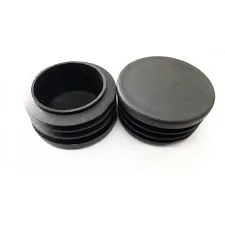Mobile:+86-311-808-126-83
Email:info@ydcastings.com
Melting Aluminum Techniques for Efficient Casting Processes in Metalworking
Melting Aluminum for Casting A Comprehensive Guide
Aluminum casting is a widely used manufacturing process in various industries, ranging from automotive parts to aerospace components. The versatility of aluminum makes it an ideal material for casting due to its lightweight, corrosion resistance, and excellent machinability. However, before casting can take place, the aluminum must be melted. This article provides a comprehensive overview of the melting process for aluminum, highlighting critical parameters, techniques, safety considerations, and the importance of obtaining the right material properties for successful casting.
Understanding the Melting Process
Melting aluminum is the first step in the casting process. Aluminum has a relatively low melting point of about 660.3 degrees Celsius (1220.5 degrees Fahrenheit), which makes it easier to melt compared to other metals. The melting can be performed using several methods, including electric resistance furnaces, gas-fired furnaces, induction furnaces, and crucible melting. Each melting method has its advantages and disadvantages, depending on the scale of operation and specific requirements of the aluminum alloy being used.
1. Electric Resistance Furnaces These furnaces use electric currents to heat up resistance wires. They are common in foundries because they provide precise temperature control and are energy efficient, making them suitable for melting aluminum in small to medium batches.
2. Gas-Fired Furnaces These utilize natural gas or other fuels to generate heat. While they might be less energy-efficient than electric furnaces, they are often employed for large-scale operations due to their ability to generate high temperatures quickly.
3. Induction Furnaces Induction heating utilizes electromagnetic induction to heat the aluminum, resulting in very uniform heating and the ability to reach high temperatures rapidly. This method is known for its efficiency and is commonly used in industrial applications.
4. Crucible Melting This is a simpler method usually suited for small-scale production or hobbyists. A crucible made of materials that can withstand high temperatures is used to melt the aluminum. This method requires constant supervision but is a cost-effective solution for small batches.
Temperature Control and Metal Quality
Maintaining the correct temperature during the melting process is crucial. If the temperature exceeds the melting point significantly, it can lead to oxidation and loss of alloying elements, impacting the quality of the final cast product. Additionally, controlling the cooling rate is essential to prevent the formation of defects within the metal.
melting aluminum for casting

To achieve the desired properties in the cast aluminum, various alloys can be used. Aluminum alloys are generally categorized into two main types wrought and cast alloys. Cast alloys, designated by a four-digit number system, contain various alloying elements such as silicon, copper, magnesium, and zinc, which enhance specific properties like strength and corrosion resistance.
Safety Considerations
Melting aluminum involves significant risks, including exposure to high temperatures, molten metal splashes, and potentially hazardous fumes. Therefore, following strict safety guidelines is crucial
1. Personal Protective Equipment (PPE) Operators should wear appropriate PPE, including heat-resistant gloves, goggles, face shields, and protective clothing.
2. Ventilation It is essential to ensure proper ventilation in the melting area to disperse any fumes generated during the melting process.
3. Emergency Preparations Foundries must have emergency protocols in place, including fire extinguishers and first aid kits, to address any potential accidents promptly.
Conclusion
Melting aluminum for casting is a critical phase that sets the foundation for the quality and performance of the final product. With various melting methods available, each offering unique benefits, choosing the right technique depends on the specific requirements of production scale and material properties. Additionally, strict adherence to safety protocols ensures a secure working environment, allowing for efficient and effective operations.
As industries continue to integrate advanced technologies and processes in metal casting, understanding the melting phase's intricacies will remain integral to producing high-quality aluminum castings. With proper technique, safety measures, and temperature controls, manufacturers can harness the full potential of aluminum, paving the way for innovative applications across various sectors.
-
Valve Body Acts as the “Heart” of Flow ControlNewsMay.19,2025
-
Understanding the Importance of ImpellersNewsMay.19,2025
-
Importance of Automobile Water PumpsNewsMay.19,2025
-
How an Engine Oil Pan Works to Keep Your Car LubricatedNewsMay.19,2025
-
Common Materials Used in Pump Impeller ManufacturingNewsMay.19,2025
-
Ball Valve Casting in Modern Pipeline SystemsNewsMay.19,2025











